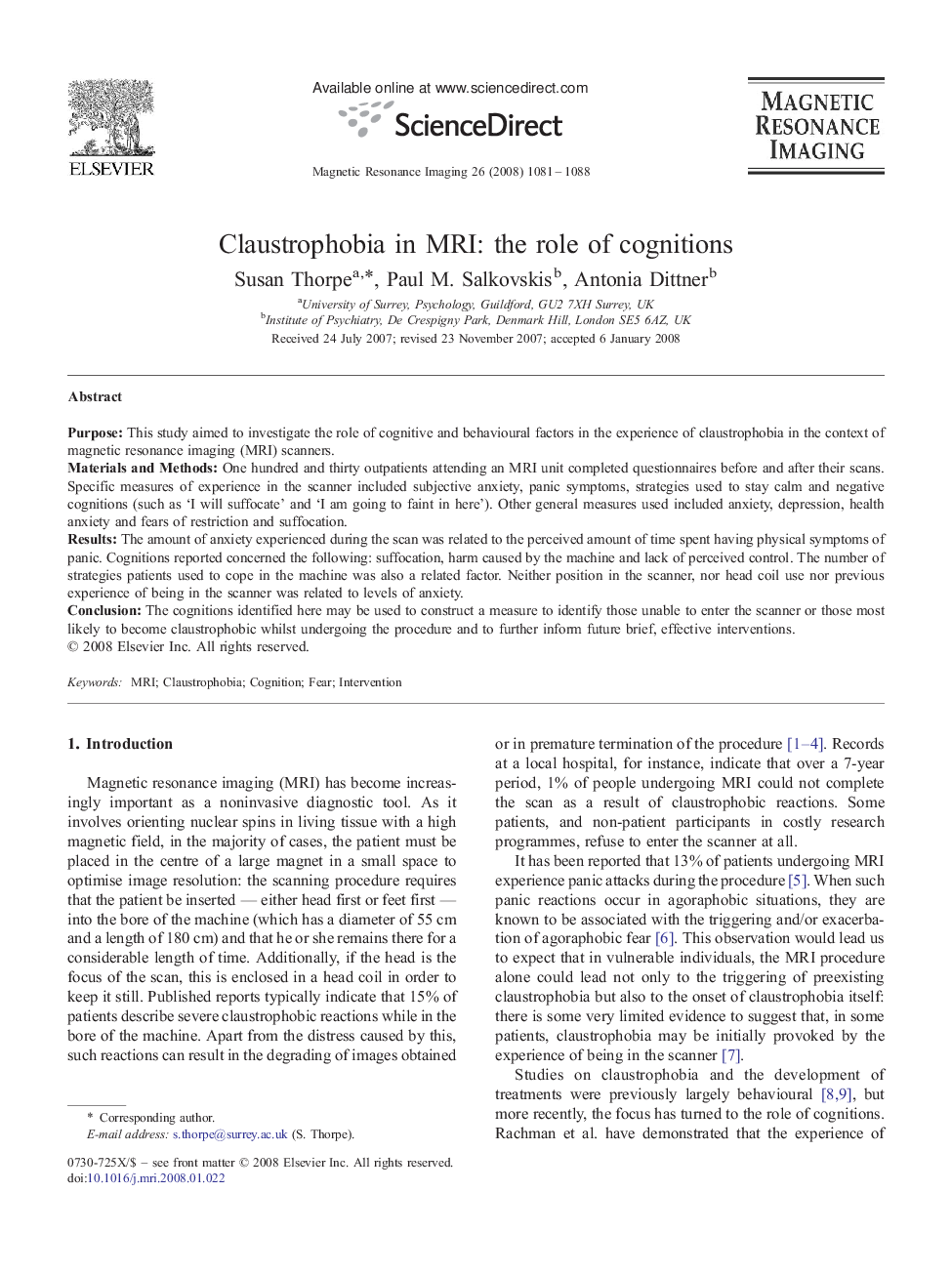| Article ID | Journal | Published Year | Pages | File Type |
|---|---|---|---|---|
| 1807404 | Magnetic Resonance Imaging | 2008 | 8 Pages |
PurposeThis study aimed to investigate the role of cognitive and behavioural factors in the experience of claustrophobia in the context of magnetic resonance imaging (MRI) scanners.Materials and MethodsOne hundred and thirty outpatients attending an MRI unit completed questionnaires before and after their scans. Specific measures of experience in the scanner included subjective anxiety, panic symptoms, strategies used to stay calm and negative cognitions (such as ‘I will suffocate’ and ‘I am going to faint in here’). Other general measures used included anxiety, depression, health anxiety and fears of restriction and suffocation.ResultsThe amount of anxiety experienced during the scan was related to the perceived amount of time spent having physical symptoms of panic. Cognitions reported concerned the following: suffocation, harm caused by the machine and lack of perceived control. The number of strategies patients used to cope in the machine was also a related factor. Neither position in the scanner, nor head coil use nor previous experience of being in the scanner was related to levels of anxiety.ConclusionThe cognitions identified here may be used to construct a measure to identify those unable to enter the scanner or those most likely to become claustrophobic whilst undergoing the procedure and to further inform future brief, effective interventions.
